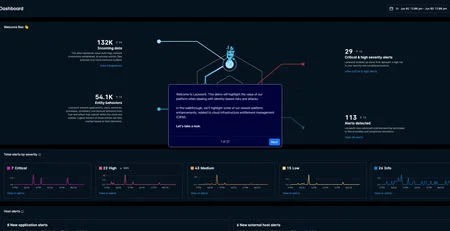Excessive permissions: The hidden security threat
Table of contents
The peril of excessive permissions Understanding the impact of excessive permissions Excessive permissions explained The security risks of excessive permissions The principle of least privilege Limiting users' file permissions Best practices and mitigation strategiesPeril of excessive permissions: A silent security menace
Excessive permissions often go unnoticed, allowing employees unnecessary access to sensitive data and elevating risk. Without proper controls, this quiet threat can cause immense damage. Understanding the dangers of excessive privileges is critical for security.
Understanding the impact of privilege in digital spaces
Privileged access powers user capabilities, enabling efficient workflows. However, more privilege means more potential for abuse. Excess permissions magnify insider threat, data exposure, and other risks. Managing permissions is key to limiting privilege.
Excessive permissions explained
Demystifying excessive permissions
Excessive permissions, also called privileges, give users more access than needed to complete their work. This superfluous access leaves organizations vulnerable. Excessive privilege should be limited through careful permission design.
The spectrum of permissions: From minimum to excessive
Permissions exist on a spectrum - from minimum required to operate to excessive inflated access. Minimum permissions enhance security while excessive heightens risk. Understanding this spectrum helps assign appropriate access.
The security risks of excessive privileges
Unearthing the dangers: How excessive privileges cause security risks
Excessive permissions allow unnecessary access, expanding the attack surface. This enables malicious actors to abuse privileges and exposes sensitive data. Limiting permissions is key to managing risk.
Privilege creep: The silent threat within
Privilege creep happens when users accumulate excessive permissions over time, often going unnoticed. This escalates insider threats. Regular audits must review permissions to reduce the risk of a breach. Excess privileges have enabled many high-profile data thefts.
The principle of least privilege
The foundation of secure permissions: Principle of least privilege (PoLP)
PoLP states users should only have the minimum access needed for their role. This principle limits risk exposure. Applying PoLP to permissions enhances security. PoLP should guide user role and permission design and access should align with business needs. For files, enforce need-to-know and limit permissions to the bare minimum whenever possible.
Limiting users' file permissions
The critical role of user permissions in data protection
Tight user file permissions help control data access and reduce risk exposure. Excess file access enables data theft and exposure.
Strategies for limiting and managing file permissions
Set explicit share permissions, limit broad access groups, and routinely audit for excess privileges. For sensitive data, restrict permissions through access control lists (ACLs) and encryption, and continually monitor access.
Ensuring proper permissions in multi-user environments
In multi-user settings, excessive permissions spread easily. Enforce separation of duties and limit cross-team access. Control group membership strictly to reduce risk.
Best practices and mitigation strategies
Effective strategies for mitigating excessive permissions
- Avoid default permissive settings.
- Continuously monitor for excess.
- Implement approval processes for access changes.
- Integrate permissions into onboarding/offboarding.
Regular auditing and monitoring: A proactive approach
Actively auditing and monitoring permissions identifies issues proactively and efficiently.. This enables adjusting inappropriate access before exploitation.
Automation and tools to avoid excessive permissions
Automating permission management streamlines enforcement of least privilege with strong controls. Tools can remove manual processes and provide visibility into access.
Conclusion
Excessive permissions are a silent but dangerous threat, enabling data theft and insider attacks. Applying least privilege principles, auditing access, and automating management are key strategies to limit risk. With vigilant controls, organizations can securely operate while preventing permission-based threats.
INTERACTIVE DEMO
Lacework CIEM
Jump into the Lacework platform and explore how our cloud infrastructure entitlement management (CIEM) capabilities help get permissions in order.
Explore CIEM
This article was generated using automation technology. It was then edited and fact-checked by Lacework.